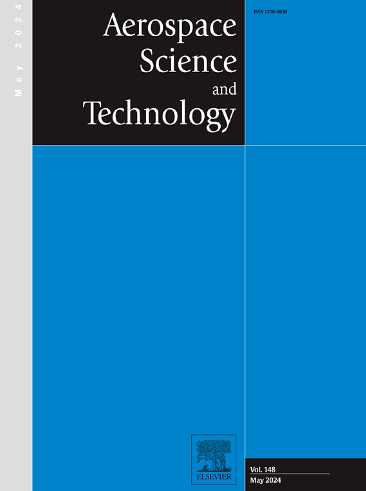Development of the minimal biorobotic stealth distance and its role in optimizing direct-drive dragonfly-inspired aircraft design
IF 5
1区 工程技术
Q1 ENGINEERING, AEROSPACE
引用次数: 0
Abstract
Advancements in electronic technology and control algorithms have enabled precise flight control techniques, transforming bionic aircraft from principal imitation to comprehensive resemblance. This paper introduces the Minimal Biorobotic Stealth Distance (MBSD), a novel quantitative metric to evaluate the bionic resemblance of biorobotic aircraft. Current technological limitations prevent dragonfly-inspired aircraft from achieving optimal performance at biological scales. To address these challenges, we use the DDD-1 dragonfly-inspired aircraft, a hover-capable direct-drive aircraft, to explore the impact of the MBSD on aircraft design.
Key contributions of this research include (1) the establishment of the MBSD as a quantifiable and operable evaluation metric that influences aircraft design, integrating seamlessly with the overall design process and providing a new dimension for optimizing bionic aircraft, balancing mechanical attributes and bionic characteristics; (2) the creation and analysis of a typical aircraft in the following directions: its coupling relationship with existing performance metrics (Longest Hover Duration and Maximum Instantaneous Forward Flight Speed), multi-objective optimization, and application in a typical mission scenario; (3) the construction and validation of a full-system model for the direct-drive dragonfly-inspired aircraft, demonstrating the design model's effectiveness against existing aircraft data.
The findings highlight the MBSD's role in enhancing the operational capabilities of biorobotic aircraft and provide a systematic approach for optimizing design and performance in biomimetic aerial vehicles.
求助全文
约1分钟内获得全文
求助全文
来源期刊

Aerospace Science and Technology
工程技术-工程:宇航
CiteScore
10.30
自引率
28.60%
发文量
654
审稿时长
54 days
期刊介绍:
Aerospace Science and Technology publishes articles of outstanding scientific quality. Each article is reviewed by two referees. The journal welcomes papers from a wide range of countries. This journal publishes original papers, review articles and short communications related to all fields of aerospace research, fundamental and applied, potential applications of which are clearly related to:
• The design and the manufacture of aircraft, helicopters, missiles, launchers and satellites
• The control of their environment
• The study of various systems they are involved in, as supports or as targets.
Authors are invited to submit papers on new advances in the following topics to aerospace applications:
• Fluid dynamics
• Energetics and propulsion
• Materials and structures
• Flight mechanics
• Navigation, guidance and control
• Acoustics
• Optics
• Electromagnetism and radar
• Signal and image processing
• Information processing
• Data fusion
• Decision aid
• Human behaviour
• Robotics and intelligent systems
• Complex system engineering.
Etc.
 求助内容:
求助内容: 应助结果提醒方式:
应助结果提醒方式:


